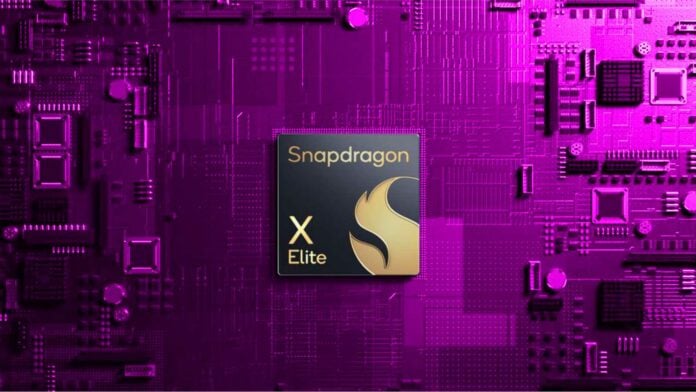Qualcomm stepped out of its smartphone comfort zone with Snapdragon X Elite last October, but it couldn’t fool us. The laptop benchmarks it showcased were against Intel’s previous generation Raptor Lake-P chips, which isn’t a fair fight. We’ll forgive it since Meteor Lake hadn’t reared its head at that point. With 14th Gen firmly here, Qualcomm released another set of comparisons that don’t look too good for Intel Core Ultra.
Setting the stage for Snapdragon X Elite, Qualcomm came in swinging. Pitting the SoC against Intel Core i7-1360P and i7-1355U, it claimed the chip is double the speed of its competitors. That isn’t just the CPU but the built-in Adreno GPU at the same power consumption. Not bad for a relative newcomer in this space.
Fast-forward to 2024, and Qualcomm has updated its benchmarks to target Core Ultra 7 155H and Core Ultra 9 185H. On paper, there’s a stark difference in specs. Snapdragon X Elite sports 12 Oryon cores running at 3.8GHz, with two able to boost to 4.3GHz. This is noticeably lower than the 16-core 155H and 185H, which run at up to 4.8GHz and 5.1GHz, respectively.
Numbers aside, there’s a big difference in the way Qualcomm’s ARM architecture works. Everything’s symmetrical, much like AMD and how Intel used to run things. Core Ultra, however, splits performance and efficiency cores to better handle tasks. The aim is to supposedly make Team Blue’s processors better for battery life, but real-world results vary.
Just take Qualcomm’s Geekbench 6.2 tests as an example, where the chip reportedly dominates Intel Core Ultra 7 155H. Snapdragon X Elite shows up 54% faster in single-core and 52% zippier in multi-core tests at an identical power draw. Alternatively, matching the performance of the two chips means Qualcomm’s latest consumes 65% and 60% less power, respectively.
Figures are similarly staggering against Intel Core Ultra 9 185H. Matching TDP, Snapdragon X Elite is between 41% and 51% quicker in multi-core and single-core tests, respectively. Or, you have the choice to make it consume between 58% and 61% less power at the same performance.
It’s not all about computing power, as graphics also perform admirably. Using UL 3DMark Wild Life Extreme benchmark, Snapdragon X Elite is 36% faster than Core Ultra 9 155H or it consumes 50% less power in the same conditions.
None of these are particularly surprising. After all, we’ve seen Core Ultra performance and efficiency falter inside MSI Claw compared to AMD handhelds. What’s perhaps a little more shocking is that Snapdragon X Elite even beats Apple’s M3 Geekbench 6.2 score by 22%.
Naturally, we’ll need to take Qualcomm’s figures with a pinch of salt here. They are internal tests shared during a press briefing that PC World managed to capture. It’s safe to say they’re just a little cherry-picked. All in all, though, it looks like we have a real contender on our hands. I can only imagine what Qualcomm could do if it set its sights on the gaming segment. After all, underclocking is king right now.


